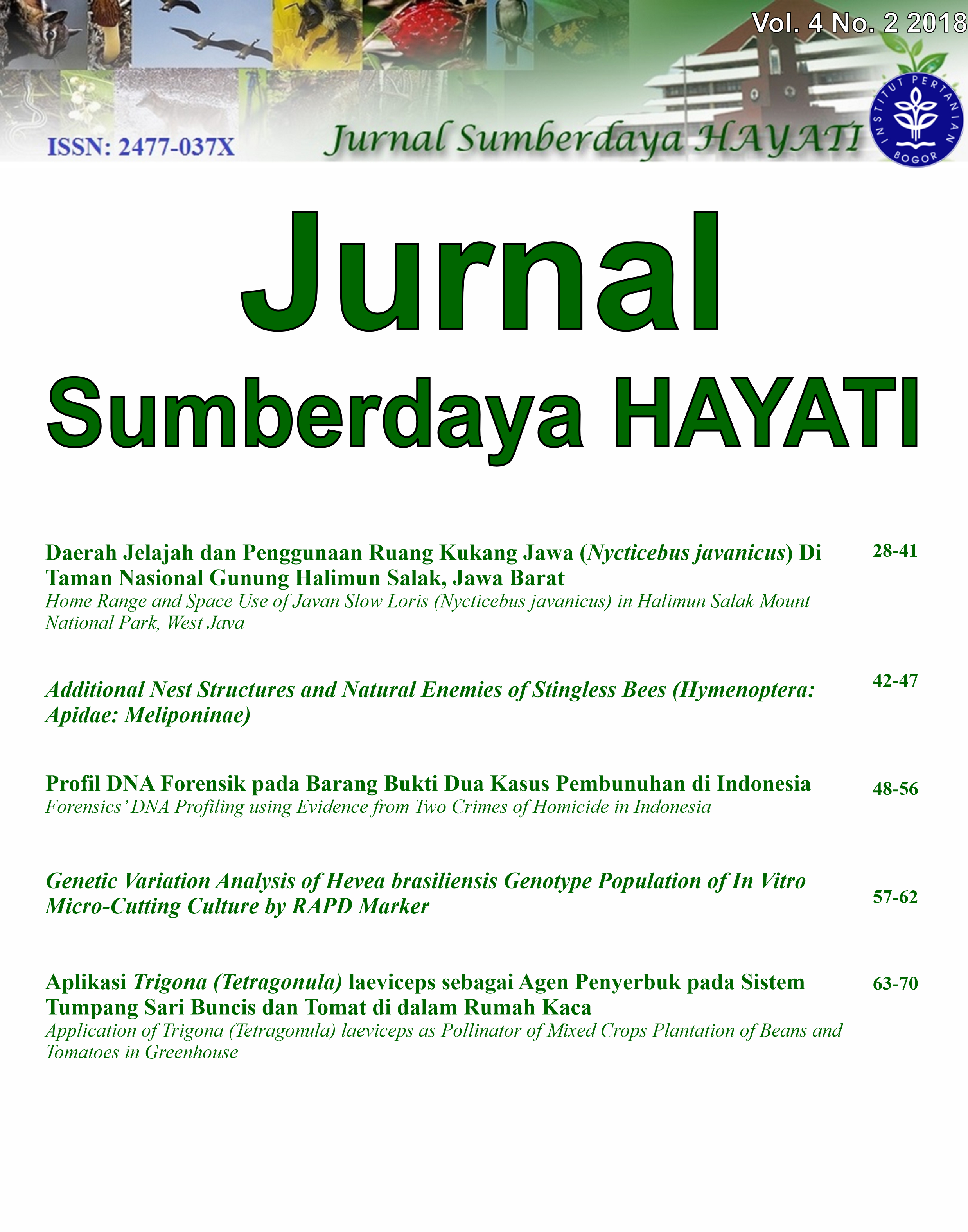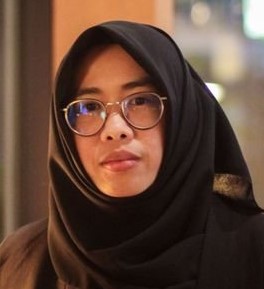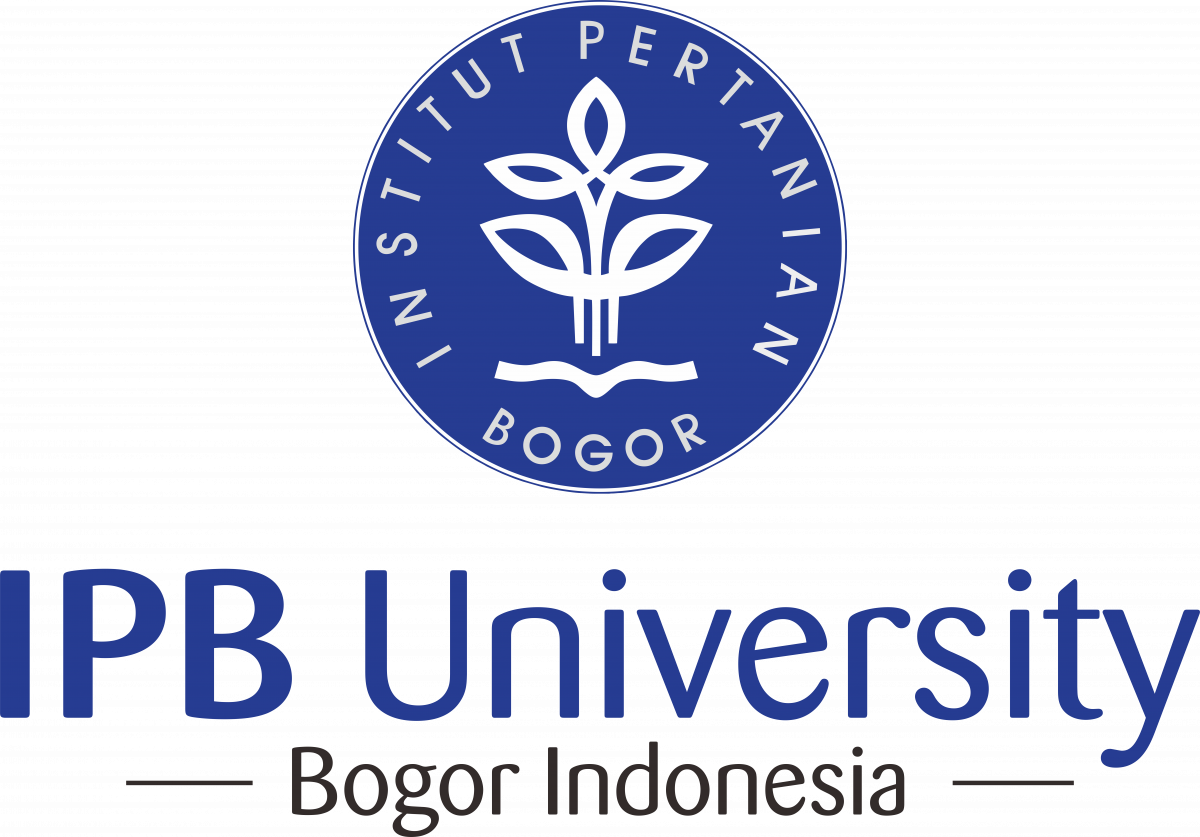Genetic Variation Analysis of Hevea brasiliensis Genotype Population of In Vitro Micro-Cutting Culture by RAPD Marker
Abstract
The rubber seeds are insufficient for producing rootstocks to rubber grafting. It can be overcome by an in vitro micro-cutting culture technique developed in the Indonesian Research Institute for Biotechnology and Bioindustry (IRIBB). However, the origin clone of 57 rubber genotypes used as an explant source in vitro micro-cutting culture is not recognized. The study was to investigate the 57 genotypes that came from mixed GT 1, PB 260, and RRIM 600 as parent clones. We investigated using seven primers of Random Amplified Polymorphic DNA (RAPD), i.e., OPA 02, OPA 07, OPA 15, OPB 04, OPC 05, OPC 11, and OPC 20. The qualitative analyzed by electrophoresis 1% gel agarose. A total of 47 DNA fragments produced with an average of 7 fragments per primer. OPA 02 generated of 13 fragments, whereas OPB 04 only one fragment. The DNA fragment pattern shows the presence of polymorphism. The genetic similarity coefficients obtained in the range of 62-96%. The highest genetic similarity (96%) is genotype 70 and 78. It recognized that 42 genotypes from 57 rubber genotypes had the closest relationship with PB 260 clones. Furthermore, six genotypes had a significant growth response as an explant in vitro micro-cutting culture.
Downloads
Authors who submit and publish with this journal agree to the following terms:
1. Authors retain copyright and grant the journal/publisher non exclusive publishing rights with the work simultaneously licensed under a Creative Commons Attribution 4.0 International License.
![]()













